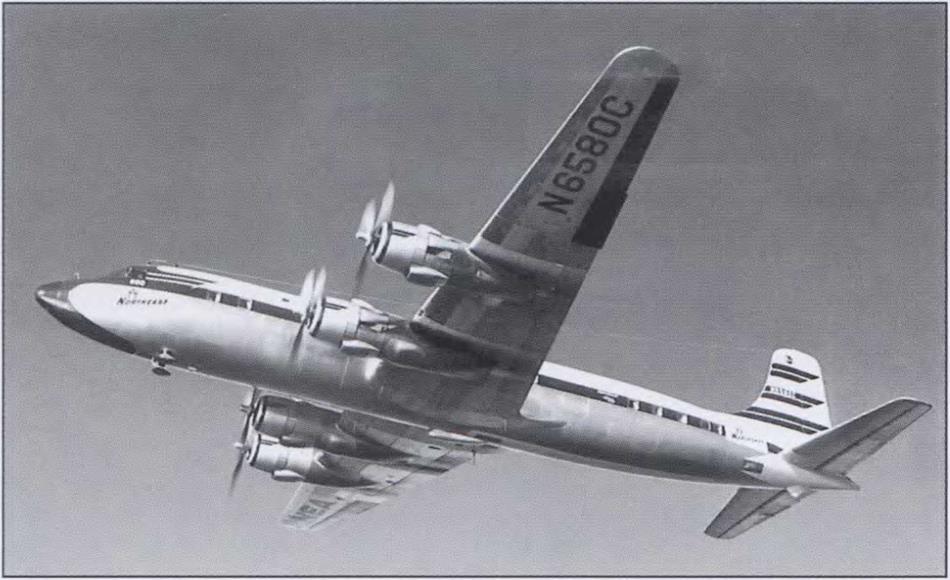Impact on the Industry from the Turbofan’s Advances
Perhaps the most significant added benefit of turbofan engines was the propitious drop in noise levels to
|
What is a propeller-driven DC-6B doing in this chapter on fanjets? Making the point that some airplanes are almost irreplaceable, Northeast flew its DC-6Bs on shorter intercity routes up and down the Washington-New York-Boston corridor until 1966. Despite the airline having new twinjets and turboprops flying by the late 1960sf nothing could beat the sheer economic advantage of the reliable Douglas propliner on those shorter; commuter stage lengths. (Mike Machat Collection) |
the point where cumbersome external noise suppressors were no longer required. With the cooler fan exhaust literally shrouding the hot core section gases as they exited the tailpipe, the painful roar of the engine was mitigated to much more acceptable sound levels around airports, and even when the aircraft were flying over them at higher altitudes. From a purely power standpoint, the fanjet JT3D produced up to 18,000 pounds of thrust compared to the “straight” turbojet JT3C’s
12,0 pounds.
Around the country, initial public perception indicated that the first turbojet-powered airliners had earned an unenviable reputation for being much louder than the piston-powered aircraft they replaced. As a result, restrictive rules were imposed requiring some – times-complex, noise-abatement procedures, particularly on takeoff. The new generation of turbofan – powered jetliners combined the attributes of lower overall-engine-noise levels with improved thrust levels and the ability to climb more steeply on takeoff, thus becoming “good neighbors” wherever they flew.











